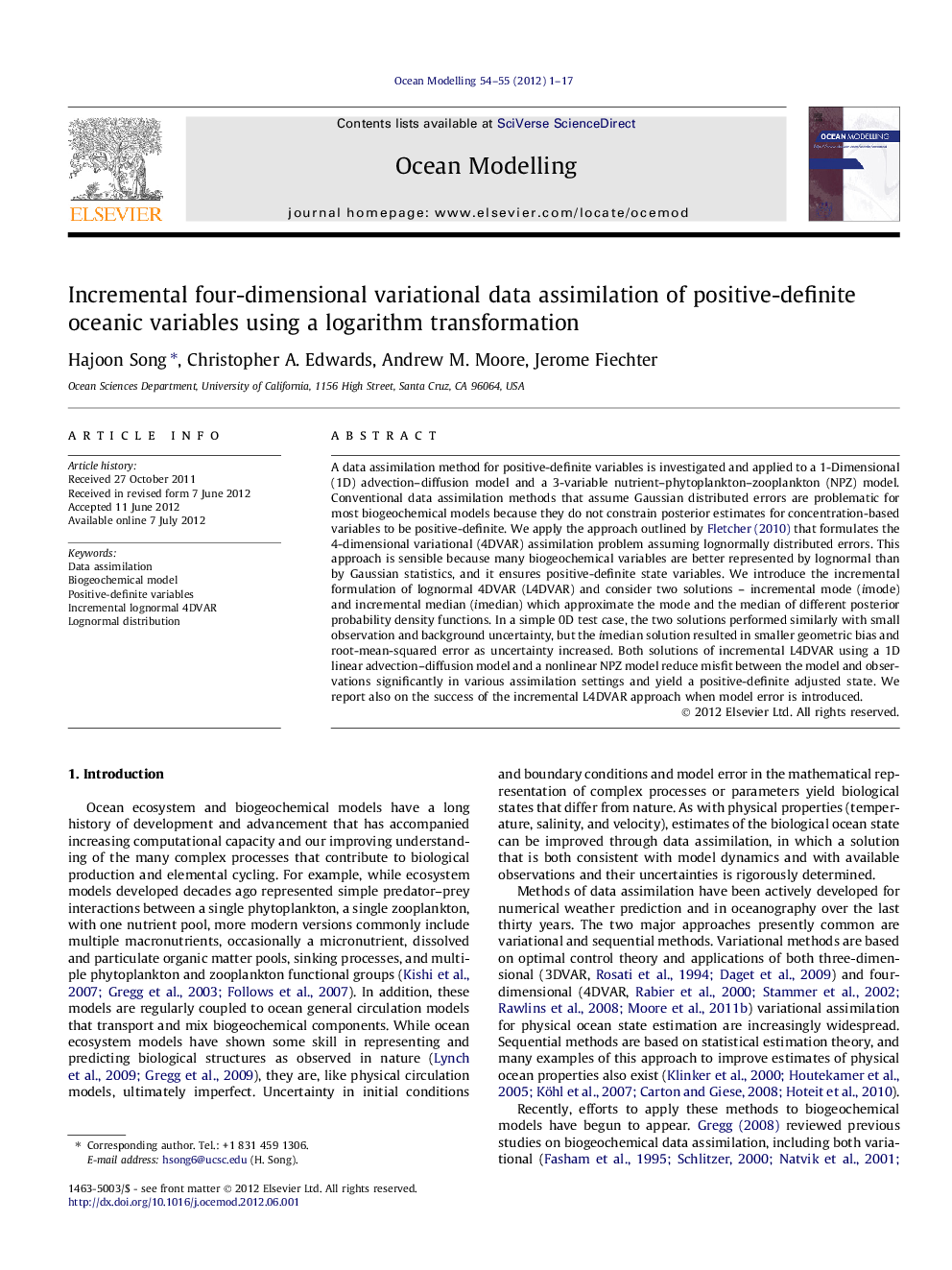| کد مقاله | کد نشریه | سال انتشار | مقاله انگلیسی | نسخه تمام متن |
|---|---|---|---|---|
| 4552177 | 1627791 | 2012 | 17 صفحه PDF | دانلود رایگان |

A data assimilation method for positive-definite variables is investigated and applied to a 1-Dimensional (1D) advection–diffusion model and a 3-variable nutrient–phytoplankton–zooplankton (NPZ) model. Conventional data assimilation methods that assume Gaussian distributed errors are problematic for most biogeochemical models because they do not constrain posterior estimates for concentration-based variables to be positive-definite. We apply the approach outlined by Fletcher (2010) that formulates the 4-dimensional variational (4DVAR) assimilation problem assuming lognormally distributed errors. This approach is sensible because many biogeochemical variables are better represented by lognormal than by Gaussian statistics, and it ensures positive-definite state variables. We introduce the incremental formulation of lognormal 4DVAR (L4DVAR) and consider two solutions – incremental mode (imode) and incremental median (imedian) which approximate the mode and the median of different posterior probability density functions. In a simple 0D test case, the two solutions performed similarly with small observation and background uncertainty, but the imedian solution resulted in smaller geometric bias and root-mean-squared error as uncertainty increased. Both solutions of incremental L4DVAR using a 1D linear advection–diffusion model and a nonlinear NPZ model reduce misfit between the model and observations significantly in various assimilation settings and yield a positive-definite adjusted state. We report also on the success of the incremental L4DVAR approach when model error is introduced.
► Incremental lognormal 4DVAR (L4DVAR) method is formulated for positive-definite variables.
► Under the lognormal assumption, data-assimilation fits are executed in log-space.
► Incremental L4DVAR is evaluated using 1D advection–diffusion and 1D NPZ models.
► Incremental L4DVAR reduces misfit in various assimilation settings.
Journal: Ocean Modelling - Volumes 54–55, September 2012, Pages 1–17